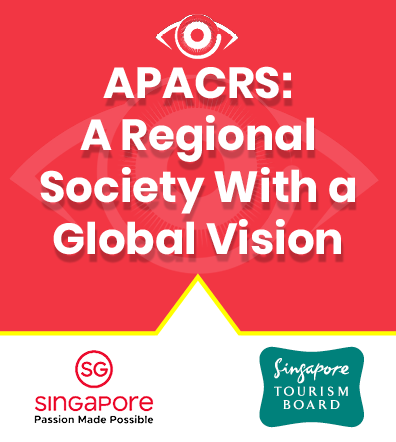Eyeworld Weekly Update |
Volume 19, Number 27 |
15 August 2014 |
- Lucentis filed for diabetic retinopathy indication
- R348 fails to meet dry eye study endpoints
- Nicox to co-promote latanoprostene bunod in U.S.
- August deemed Children's Eye Health and Safety Awareness month
- Update: Valeant, Allergan still at odds
Lucentis filed for diabetic retinopathy indication
Genentech (South San Francisco, Calif., U.S.) has filed a supplemental Biologics License Application with the U.S. Food and Drug Administration for Lucentis (ranibizumab) in the treatment of diabetic retinopathy (DR).If approved, Lucentis would be the first medication approved for this indication, Genentech said. The submission is based on results from two phase 3 studies (RISE and RIDE) that showed significant clinical improvement in patients with DR compared to placebo.
R348 fails to meet dry eye study endpoints
A JAK/SYK inhibitor under evaluation for dry eye did not meet its primary or secondary endpoints in a recently completed phase 2 clinical study, said developer Rigel Pharmaceuticals (South San Francisco, Calif., U.S.).The endpoints were measured by changes in corneal fluorescein staining, conjunctival staining, tear production and dry eye symptom scores from baseline over 12 weeks of treatment versus placebo. Although no significant adverse events were reported in the trial, Rigel has decided not to initiate any new studies of R348 for dry eye, but is continuing its phase 2 study of dry eye in patients with graft-versus-host disease.
Nicox to co-promote latanoprostene bunod in U.S.
Latanoprostene bunod, a nitric oxide-donating prostaglandin F2-alpha analog in phase 3 clinical development for the potential treatment of glaucoma and ocular hypertension, will be co-promoted in the U.S. by Nicox (Sophia Antipolis, France) and Bausch + Lomb (B+L, Bridgewater, NJ, U.S.). Nicox licensed the compound to B+L in 2010.B+L's phase 3 clinical program includes two studies, APOLLO and LUNAR, designed to compare the efficacy and safety of latanoprostene bunod administered once daily with timolol maleate 0.5% administered twice daily in lowering IOP in patients with open-angle glaucoma or ocular hypertension. The primary endpoint of both studies, which will include a combined total of approximately 800 patients, is the reduction in mean IOP measured at specified time points during 3 months of treatment. Another phase 3 study, JUPITER, is evaluating the compound in 130 subjects in Japan. KRONUS, a phase 1 study, will evaluate the effect of latanoprostene bunod 0.024% administered once daily in reducing IOP measured over a 24-hour period in approximately 24 healthy male Japanese subjects.
August deemed Children's Eye Health and Safety Awareness month
Prevent Blindness (Chicago) has declared August Children's Eye Health and Safety Awareness month to inspire parents to make their child's vision health a priority.Family-friendly resources on a wide variety of topics that help parents take the right steps to keep their child's sight healthy for life can be found at preventblindness.org and through the National Center for Children's Vision and Eye Health. Topics covered include amblyopia, strabismus, ultraviolet protection and sports safety, and the Affordable Care Act and children's vision.
Update: Valeant, Allergan still at odds
A top shareholder has said Laval, Canada-based Valeant Pharmaceuticals "doesn't need to win" its hostile takeover bid for Irvine, Calif.-based Allergan. ValueAct Capital, Valeant's third largest shareholder with 5.7%, would welcome the merger, but has gone on the record as noting a "protracted bidding war" may be too distracting.Meanwhile, William Ackman, who owns hedge fund Pershing Square and is attempting the takeover with Valeant, said his firm "remains committed to pushing ahead" with the acquisition. Earlier this month, Allergan sued Mr. Ackman, alleging the hedge fund colluded with Valeant to purchase shares as Valeant was preparing its tender offer. Allergan is seeking a jury trial in Irvine, Calif., and experts predict the suit may not be settled until some time in 2015.
RESEARCH BRIEFS
- V.F. Koefoed and colleagues reported on contrast sensitivity (CS) values obtained by two different test methods and then calculated index of contrast sensitivity (ICS) values in a young, adult population with normal visual acuity. Although the agreement between the photopic tests indicated that they may be used interchangeably, there was little agreement between the mesopic and photopic tests. In 180 military recruits, CS frequency data for all tests were highly skewed with a marked ceiling effect for the photopic tests. The median ICS for Optec 6500 at 85 cd/m2 was -0.15, compared with -0.00 for Optec at 3 cd/m2 and 0.30 for CSV-1000E. The regression line on the difference of average was near 0 (R2=0.03). The study is published in Acta Ophthalmologica.
- The relative dimensions of the eyeball's anterior portion in primary angle-closure glaucoma (PACG) eyes might be within the normal range, a group of Asian researchers has found. Y.K. Kim and colleagues compared 101 subjects with PACG to 101 normal subjects (age- and gender-matched). Based on anterior segment optical coherence tomography scans, and using customized software, the anterior vault (AV) and lens vault (LV) were measured. They were defined as the maximum distances between the horizontal line connecting the two scleral spurs and the posterior corneal surface and anterior lens surface, respectively. Significant differences between PACG eyes and normal eyes were found in the LV (1.06±0.41 vs. 0.36±0.37 mm), relative LV (0.34±0.23 vs. 0.11±0.25), and axial length (22.96±0.94 vs. 24.02±1.33 mm). However, the two groups' values of the AV relative to those of axial length were identical (both 0.14±0.03). The study is published in BMC Ophthalmology.
- In post-PRK pain control, the duration and pattern of action varies depending upon the type of nonsteroidal anti-inflammatory drugs (NSAIDs), according to J.P. Hong and colleagues. The South Korean researchers randomly assigned 94 patients to two groups: ketorolac group (ketorolac 0.5% in 1 eye and ofloxacin 0.3% in the other eye) and diclofenac group (diclofenac 0.1% in 1 eye and ofloxacin 0.3% in the other eye). One drop of each ophthalmic drug was applied 3 times to each eye 30 minutes before PRK. Initially, the degree of pain reduction was constant for both NSAIDs; it dropped after 24 hours and 36 hours in the ketorolac group and the diclofenac group, respectively. The postoperative time-serial pattern of the pain score changed in the diclofenac group but not in the ketorolac group compared with the pattern in the ofloxacin-treated eye. The visual outcome was not affected by either NSAID, and significant complications were not noticed for a mean of 7 months. The study is published in the ,Journal of Cataract & Refractive Surgery.
- Geuder (Heidelberg, Germany) introduced the megaTRON S4HPS. With its higher cut rate of up to 12,000 cpm in combination with the MACH2 vitreous cutter, the new instrument is "even more efficient in the posterior segment," the company said. Due to its hybrid pump system, the device is completely independent from external compressed air supply and offers the flexibility of various ways to generate vacuum, Geuder added.
 Licensed Publications |
Licensed through ASCRS American Society of Cataract and Refractive Surgery, 4000 Legato Road, Suite 700, Fairfax, VA 22033-4003, USA.
All rights reserved. The ideas and opinions expressed in EyeWorld Asia-Pacific Weekly News do not necessarily reflect those of the ASCRS�ASOA or APACRS. Mention of products or services does not constitute an endorsement by the ASCRS�ASOA or APACRS. Copyright 2008, EyeWorld News Service, a division of ASCRS Media. |



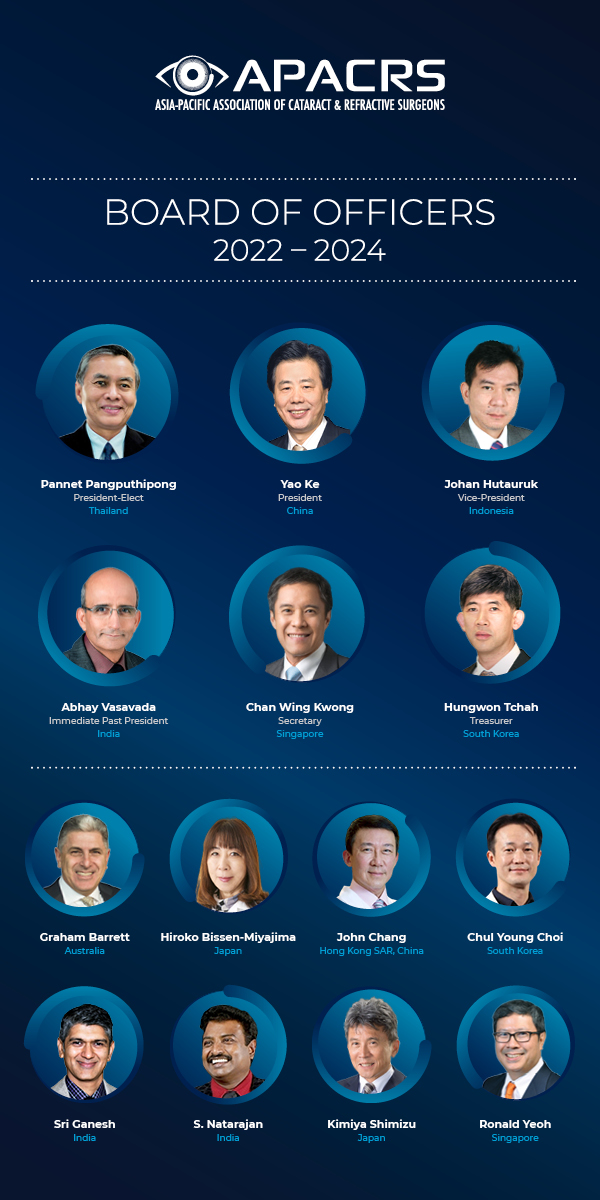
 EyeSustain Update
EyeSustain Update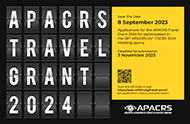 2024 APACRS TRAVEL GRANT
2024 APACRS TRAVEL GRANT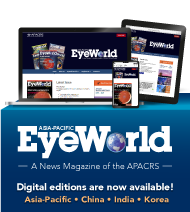 Digital EyeWorld
Digital EyeWorld VOL. 39 (2023), ISSUE 3
VOL. 39 (2023), ISSUE 3  Membership Information
Membership Information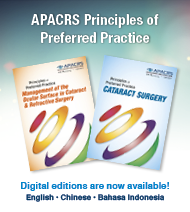 APACRS Principles of Preferred Practice
APACRS Principles of Preferred Practice